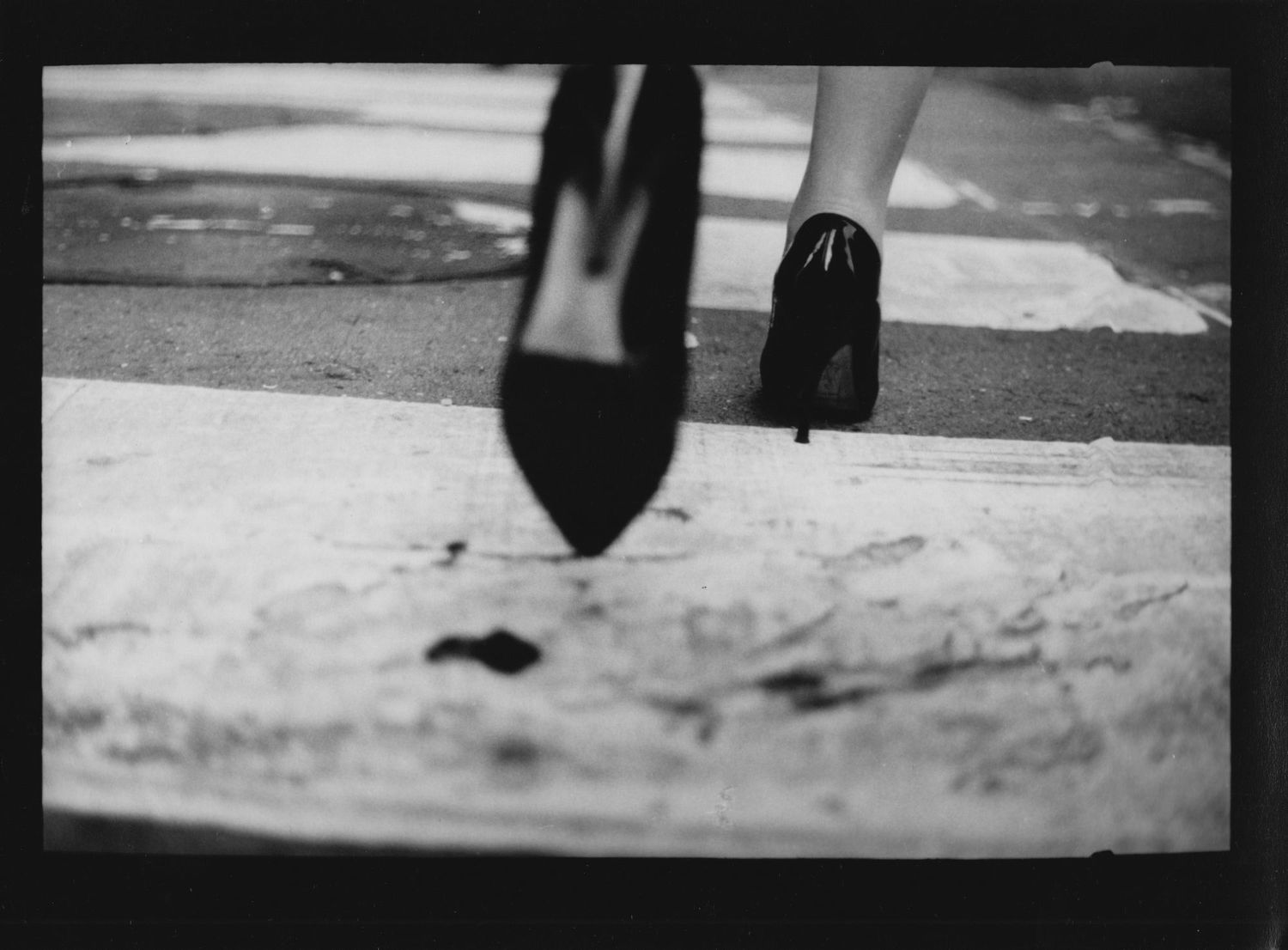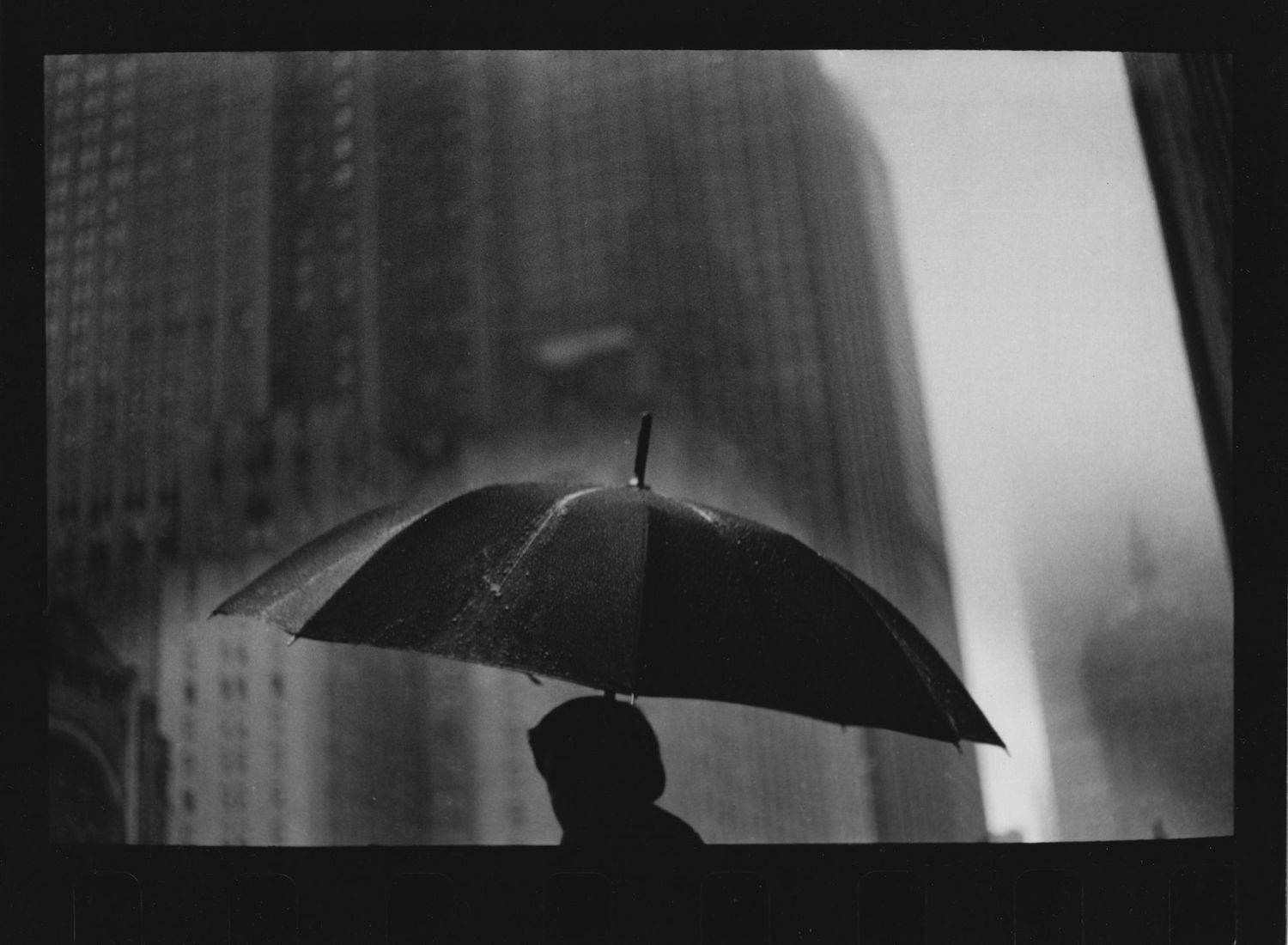Giacomo Brunelli stalks the streets of New York with his old film camera, often for ten hours a day, looking for characters and details that are adrift in time. His work has an air of nostalgia to it, and a film noir sensibility. The images are dark, shadowy, moody and a bit menacing — as if we’re looking through the eyes of a night detective, a voyeur or a stalker. They provoke an unspoken narrative, offering up clues to an unknown mystery.
True to his love of old things and old ways, Brunelli shoots with a 1962 Miranda camera and prints in his darkroom. We exchanged some questions and answers via email. Here is an edited version of our conversation.
LensCulture: Can you describe a typical day when you are out making photographs in New York?
Giacomo Brunelli: My typical day in NY is very intense, both physically and mentally. I wake up early in the morning and photograph the streets until the light works for me. I take two or three breaks to eat and rest, and walk for 20-25 km a day. By only using the available natural light and no meter, I seek out the light that I like and know best. Having my subjects in that ‘space’ is one of the most important things in my work.
Overcast skies when everything is dense and suspended are my favorites, they make the background clear and my fantasy can travel faster.
LC: What do you like about black and white film that you can’t do with color or digital?
GB: It is a personal response to film photography on many levels, and I enjoy the whole black and white printing process. Holding a fiber-based gelatin silver print in your hands is just different from a digital one. Its fragility and elegance suits my vision.
Also, the way you approach the two miedums differs. Shooting with a 35mm Miranda from the 60s, what I like the most are its limits, like having to change the film after 36 shots, for instance. It forces you to stop and slow down, take a break and have fresh thoughts. The same happens in the darkroom, where you open yourself up to the unexpected. I think I produce a certain type of work because of my printing background. At the end of the day I am an artisan — I know many secrets that come to life with film and in the darkroom.
LC: Are you actively looking for images that could be from old noir movies?
GB: I have only started looking at film noir movies in recent years, so it is more something within myself that attracts me to these kinds of images. I use photography to fulfil my desire to create. I must say that I do find the ‘moods’ of film noir to be very fascinating — alienation, ambiguity and amnesia.
LC: I know you’ve also done series in Hamburg and London. How was New York different from these cities?
GB: In terms of the city itself, New York is different because of its skyscrapers. They design the light in the city, and in that respect you have to move around according to their plan. You rarely get to see the sky compared to London or Hamburg! It is also different in terms of framing an image. Sometimes I just need more space in the composition, and shooting with only the 50mm has been a great challenge. I like creating restrictions in my work (like only shooting in 50 mm with black and white film), because they force me to experiment and grow as an artist.
LC: Who are your photographic influences?
GB: I have been influenced by Lartigue, Walker Evans, Cartier-Bresson, William Klein, Robert Frank, Lisette Model, Berenice Abbot, Muybridge, Giacomelli.




















